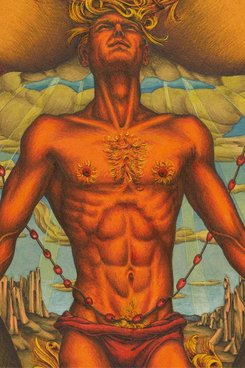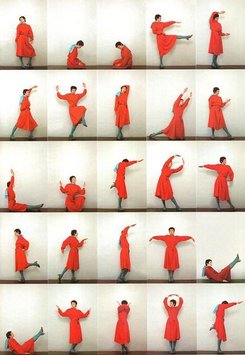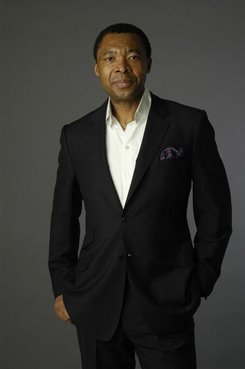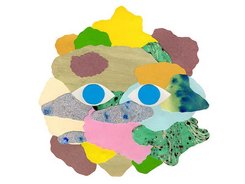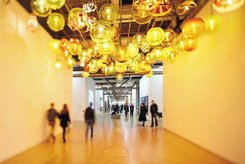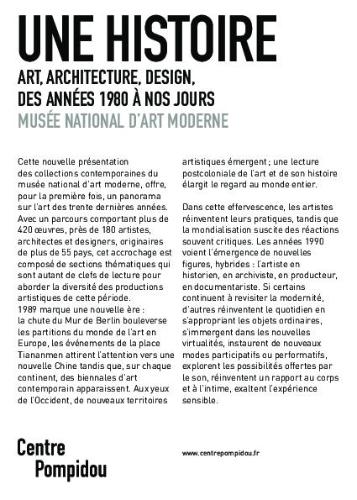Exhibition
Une histoire, art, architecture et design, des
années 80 à aujourd'hui
�2 Jul 2014 - 11 Jan 2016
�2 Jul 2014 - 11 Jan 2016

The event is over

A new presentation of the contemporary collections of the Centre Pompidou, "Une histoire", enables viewers to discover over 400 works in the Museum dating from the Eighties to the present day: a first-time opportunity to look back at the art of the last 30 years. With paintings, sculptures, installations, videos, films, drawings, photographs and architectural and design models, it offers a themed circuit through ultra-contemporary creation, with the works of nearly 180 artists and some 50 architects and designers from 55 countries. Some of the works presented only entered the collection recently, while many others are being exhibited for the first time. The history of art during the last thirty years encompasses the globalisation phenomenon, with the emergence– in the eyes of Western countries – of new artistic territories all over the world.
1989 marked a break with the past and the start of a new era. The fall of the Berlin Wall led to the discovery of art that had been partly hidden behind the Iron Curtain, and young generations of the post-Communist era began to blossom.
The events of Tiananmen Square focused all eyes on a new China, whose creation then erupted onto the international artistic scene. Hundreds of events devoted to contemporary art developed to reflect these emerging scenes, far beyond the Western – and notably English-speaking – scene. In the 1990S and 2000s, biennials sprang up and became established in the international art calendar, like those of Sharjah in the United Arab Emirates (1993), Gwangju in Korea (1995), Manifesta in Europe (1996), Berlin (1998) and Moscow (2003), to mention only a few. A genuine anti-colonial, multicultural turning point profoundly changed museums' approach to art. The Centre Pompidou has given particular and in some cases renewed attention to these emerging scenes, as reflected in this display, notably as regards the former Eastern Bloc countries, China, the Lebanon and several scenes of the Middle East, Turkey, India, South Africa, Mexico and Brazil.
The art environment itself has undergone some major changes. The number of artists, galleries and exhibition curators has risen exponentially, while art has become the focus of a new cultural "consumption". The contemporary art market, despite the recession of 1990, continues to be consolidated. Within it, American and Chinese artists are dominant, despite the breach opened by the postcolonial discourse. Following the explosion of the market, media coverage of art has contributed to democratise contemporary art, while exposing it to a spectacular element.
Numerous foundations and private initiatives have also sprung up and taken their position in this new globalised world of art, contributing to its reformulation.
the artistic point of view, the advent of virtual realities, the Internet and the digital marked another turning point. Notably, it has made the definition of a photograph revealed by the light, or the autonomy of certain media like film or video, completely obsolete. Sound has become a fully-fledged material in installations.
Artists now make the most of technological developments that enable them to work on a computer in relation to the image. The exhibition itself, considered by some artists as a medium in itself, has been programmed as a temporal "loop", as with the works of Philippe Parreno or Anri Sala.
Lastly the practice of performance has become the focus of considerable new interest, with a movement towards dance, theatre and the spoken text. Meanwhile, the history of art has also been the subject of numerous debates, although some – from Francis Fukuyama to Arthur Danto – had foretold the end of art history, or its entrance into a post-historic era.
New approaches have proposed a non-linear history, horizontal rather than vertical, which embraces local micro-histories and opens out a considerable field for research. Questions of identity have also provided material for discussion, often initiated by Afro-American artists, many of whom feel they are now in the era of "post-black art".
In this worldwide environment of seething excitement, artists have reacted to the phenomenon of globalisation and these new realities with an often critical eye, reinventing their practices in line with the upheavals of a constantly changing world where numerous political and social questions have come to light. This new presentation of the contemporary collections, "Une histoire ", puts forward a reading of art inspired by the way in which artists have positioned themselves in relation to these far-reaching changes.
Many of them have also reinvented their practices with a new approach to the very "forms of life", and their position as artists, exploring the human sciences or literature. For example, the Nineties saw the emergence of new artistic figures: producers, historians and archivists of various descriptions, as a reaction to contemporary socio-political upheavals. These changes went hand-in-hand with a reinterpretation of the history of art that is now more open-minded and less centred on the former Western view. While some of them continue to revisit modernity (though not without nostalgia), to reactivate works or to perpetuate the art of citation so popular in the Eighties, others are more immersed in new virtualities, introducing new participatory modes. The relationship with the body has also led to numerous plastic inventions, while many see themselves as narrators or autobiographers, creating fictions based on their private lives. Reality and everyday objects have been the inspiration for numerous sculptures and installations, "re-politicising" the ordinary, and making new links between the public and private spheres, themselves subjected to profound sociological upheavals.Some figures have also opened out new paths, like Steven Parrino with his new, radical, subversive style of painting, or like Thomas Hirschhorn with his new "precarious" sculpture.
By Christine Macel,
Exhibition and Museum Curator, and Head of the Contemporary and Future Creation Department at the Musée National d’Art Moderne

Conversation with Bernard Blistène, Director of the Musée National d’Art Moderne
As a new arrival at the head of the Museum, what was the first thing you noticed?
Bernard Blistène – The sheer size of the collection and its extraordinary development! With over 100,000 works, it is the largest in Europe and undoubtedly one of the most important in the world, together with that of the MoMA in New York.
It represents both a considerable responsibility and considerable possibilities. It is also the result of the commitment of all the people – curators, artists, donors, friends associations and collaborators of the institution – who contribute, with the public authorities, to its constant enrichment. Alfred Pacquement, to whom I want to pay tribute, described this rather nicely as "fruits de la passion" (a pun on "the fruits of passion" and "passion fruit"). A collection like this is an incomparable tool in providing the different sections of the public with the keys to understanding modern and contemporary art. Its diversity enables an educational approach to creation, and provides the possibility of renewing the displays in an increasingly dynamic way. The conservation team will do this through multiple "diversions" and "focus spots" in the circuits of the permanent collection, and also through the different spaces we are now remodelling.
After this new display of the contemporary collections, what form will the next presentation of the collections take?
BB – We are working on re-transcribing the collection within the many presentation areas offered by the building. I think it is essential to tone down the often too-marked distinction between temporary exhibitions and the permanent collections. After the presentation of the permanent collections (from 1905 to 1970) entitled "Modernités plurielles", which finishes in January 2015 and in counterpoint to "Une histoire. Art, architecture et design des années 1980 à nos jours", we are preparing a new modern display with a chronological order. I really like points of reference that make it possible to understand a work or a movement at a given time in a given place.
And the idea of globalisation?
BB – The presence of Catherine David, who joined the Museum at the same time as myself, is the guarantee of a demanding approach to the subject. The Centre Pompidou is now fully committed to the construction of a comprehensive collection. A great deal of work has been accomplished in this respect, in all areas of creation. But I'm keen to propose the most precise approach possible to works and their context. The demands of modernity should not blur the points of reference so essential for the broadest possible public to understand creation.
During the next few months, the Centre Pompidou is paying tribute to the exhibition "Magiciens de la terre" in 1989: a key date?
BB – Yes, because "Magiciens de la terre" was a crucial event in the history of exhibitions: a subject I find fascinating. It left a deep impression, and 25 years after the event, it is still a highly relevant platform for reflection. The hugely varied archives exhibited, the symposium, the summer University and the publication all constitute a method of analysis and debate that only an establishment on the scale of the Centre Pompidou could propose. 1989 was thus a historic threshold, which is highlighted in the display "Une histoire", opening to the public on 2 July.
You often say that the museum finds all its force of being within the Centre Pompidou?
BB – The Centre Pompidou is a unique multidisciplinary venue. The Musée National d’Art Moderne is part of an incomparable establishment that combines thinking about modern history with contemporary forecasting. It is my task to lead the Museum in complete harmony with the other components of the Centre Pompidou, and thus contribute fully to its overall strategy.
Source :
In Code couleur n°19, may-august 2014, pp. 28-30
Where
Musée - Niveau 4
When
�2 Jul 2014 - 11 Jan 2016
11am - 9pm, every days except tuesdaysMedias
In the shop
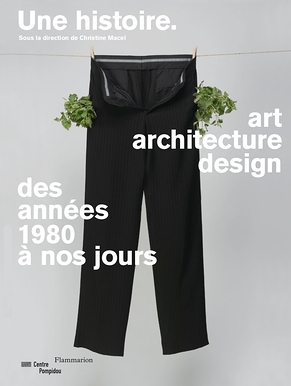
Une Histoire - Art, architecture, design des années 1980 à nos jours | Catalogue de l'exposition
39,90 € 37,90 € Member
Buy